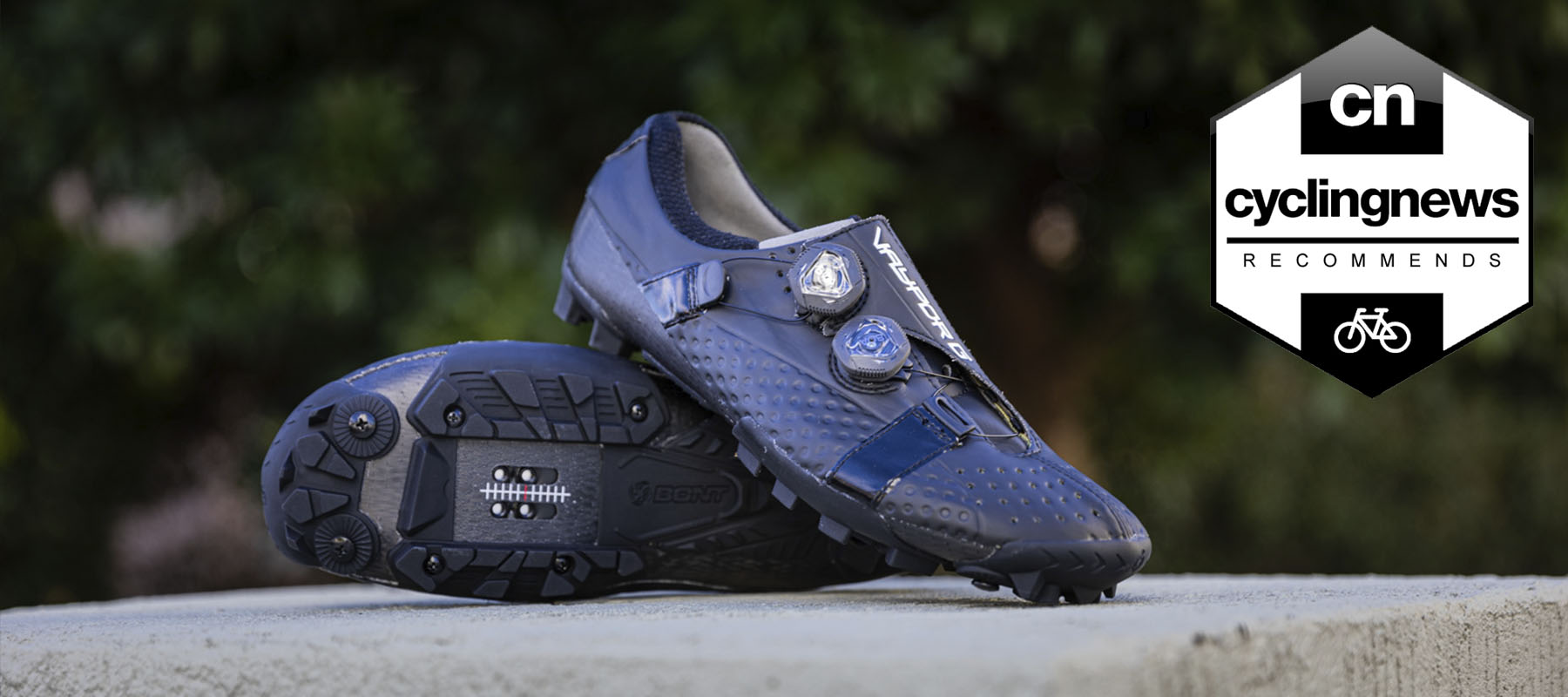Cyclingnews Verdict
Hyper efficient and customizable gravel kicks
Pros
- +
Anatomical focussed design
- +
Replacable lugs
- +
Stiffness
- +
Heat mouldable
Cons
- -
Too much lateral stiffness
- -
Feel a bit wooden
You can trust Cyclingnews
With its roots in inline skating, Australian-based Bont has a different take on cycling shoes than the vast majority of the cycling industry, in that its shoes are actually shaped like feet. A few weeks ago, we took a look at the brand’s top-end Vaypor S road shoes, but have also been ticking over the miles in its off-road focused Vaypor G as they aim for the title of best gravel bike shoes.
Gravel shoes are a recent phenomenon; essentially, they are road shoes on the top, and MTB shoes on the bottom with most of the armouring removed. However, even with the ‘gravel’ moniker, Norco Factory XC team rider, Haley Smith, has been riding in the Vaypor G and so does two-time BMX Olympian and eight-time world champ Caroline Buchanan.
For those that have read my Bont Vaypor S review, you’ll know that I was a fan of the road shoes, but off-road shoes are an entirely different kettle of fish.
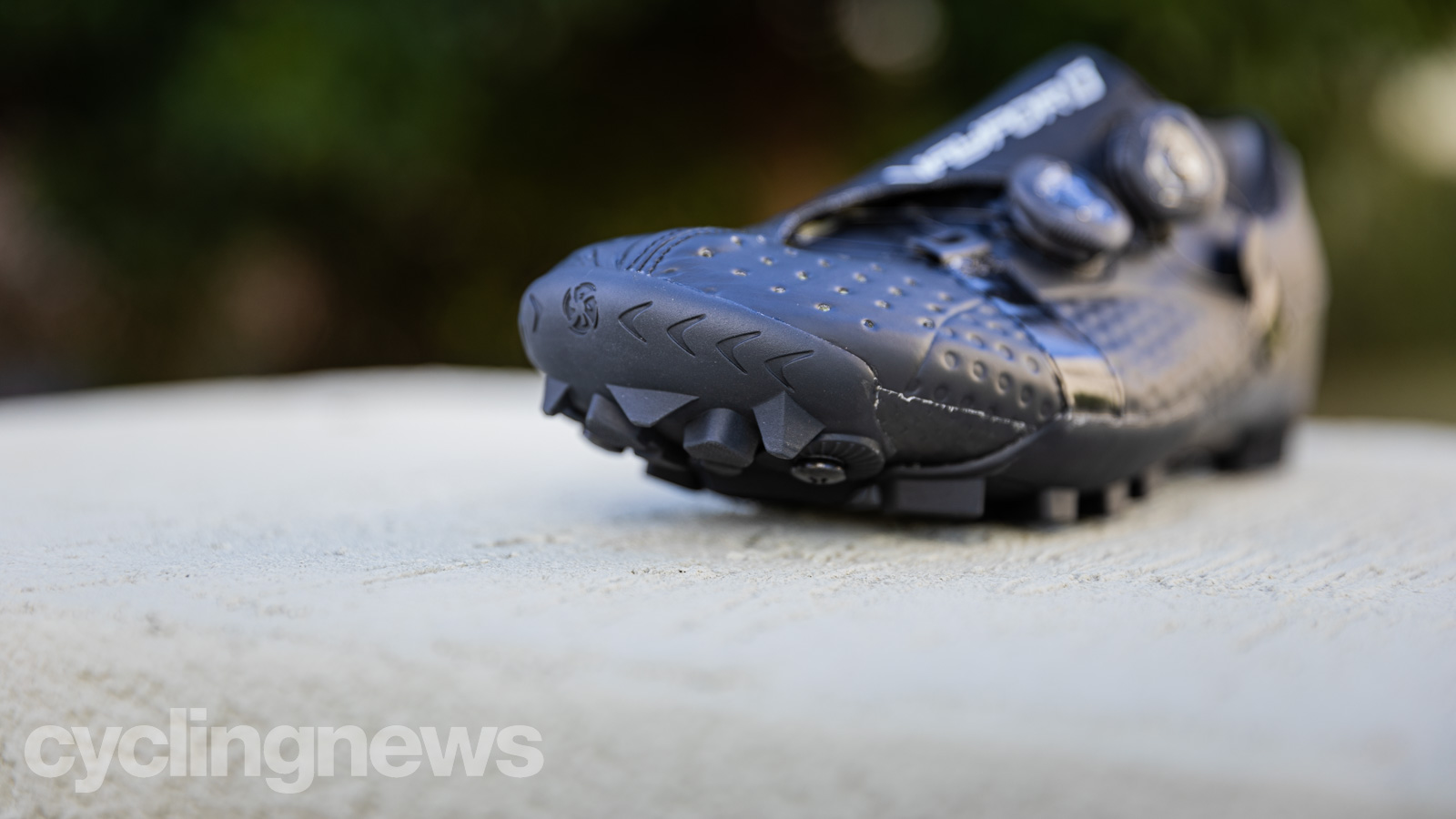
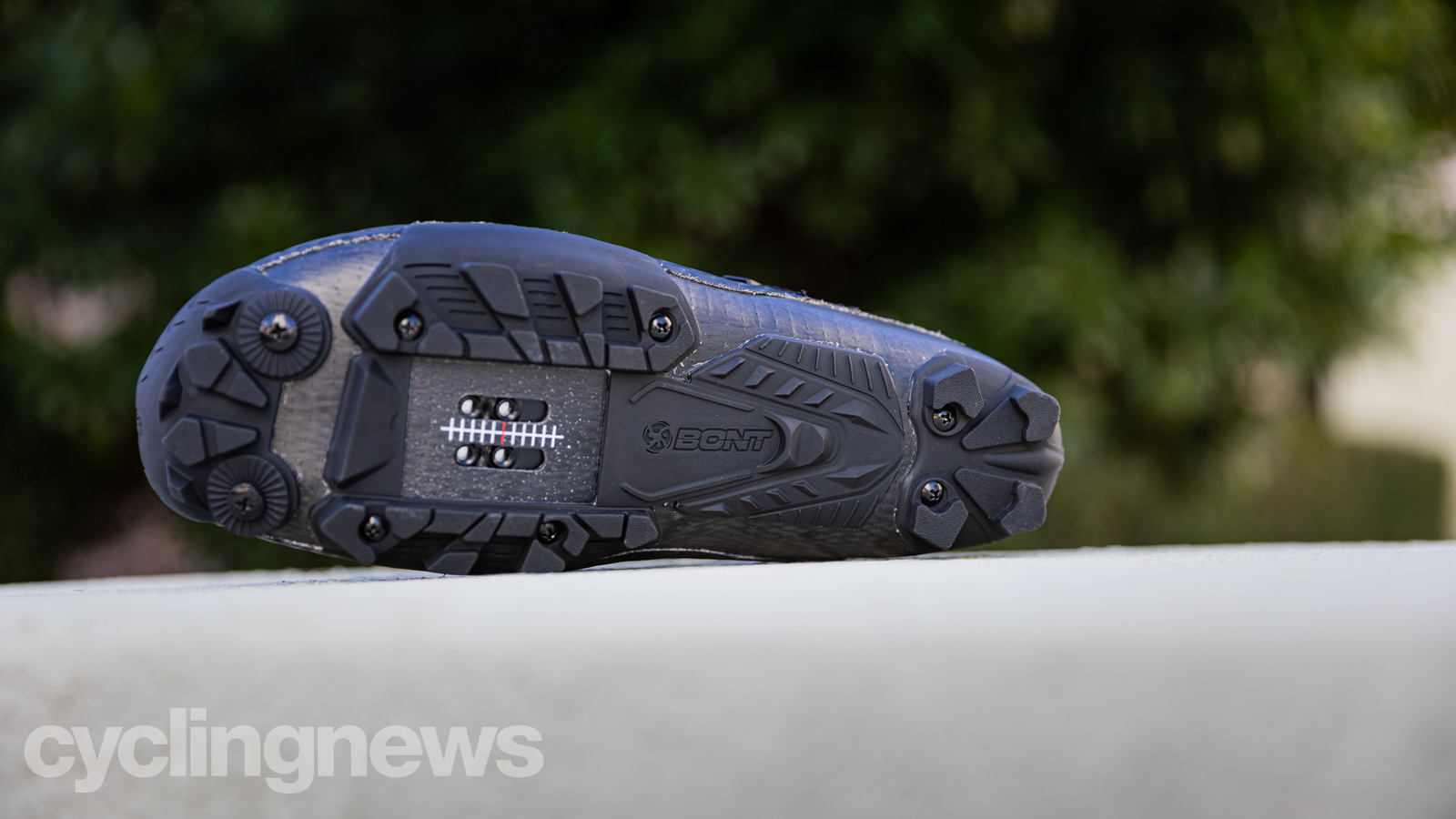
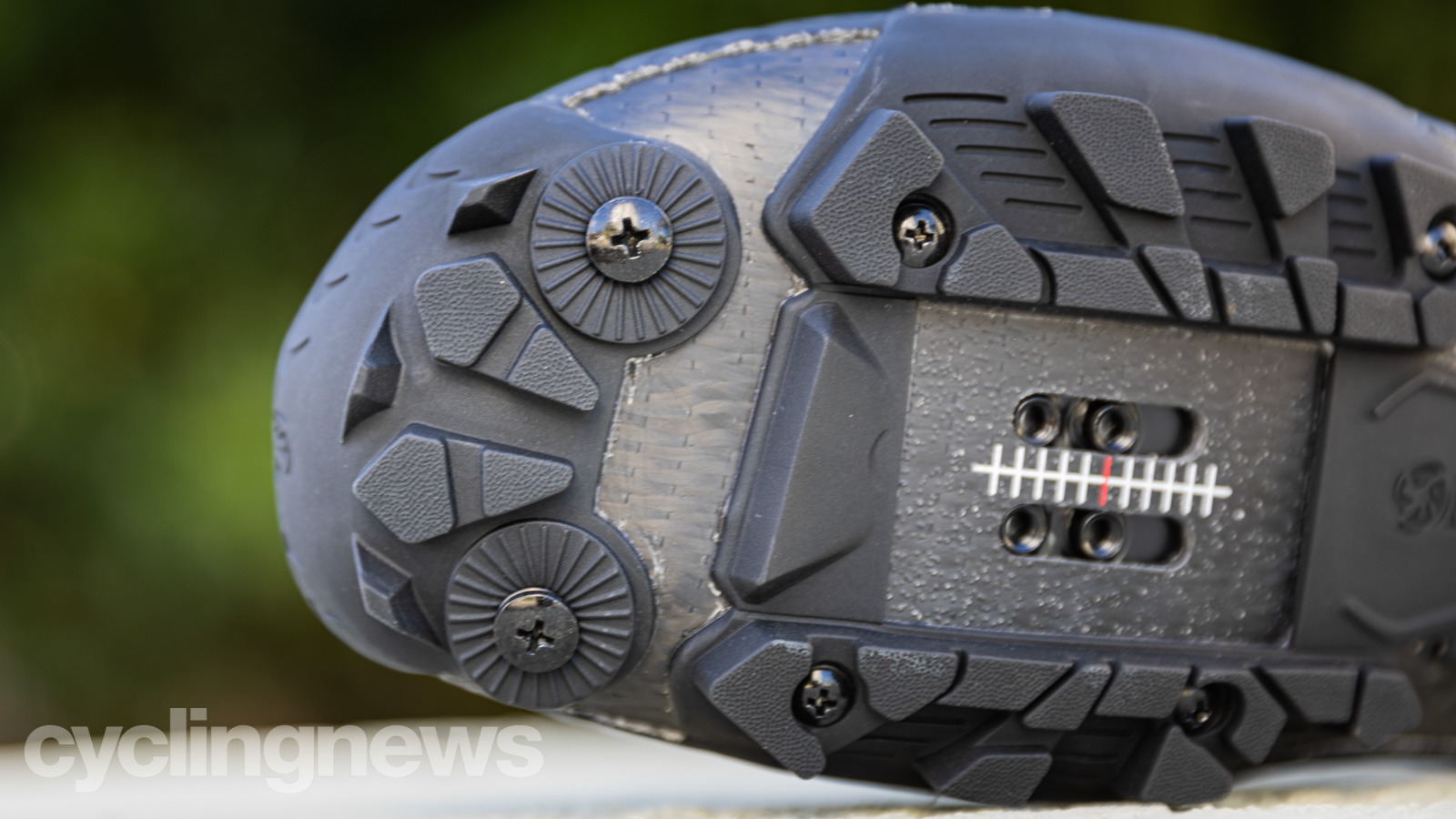
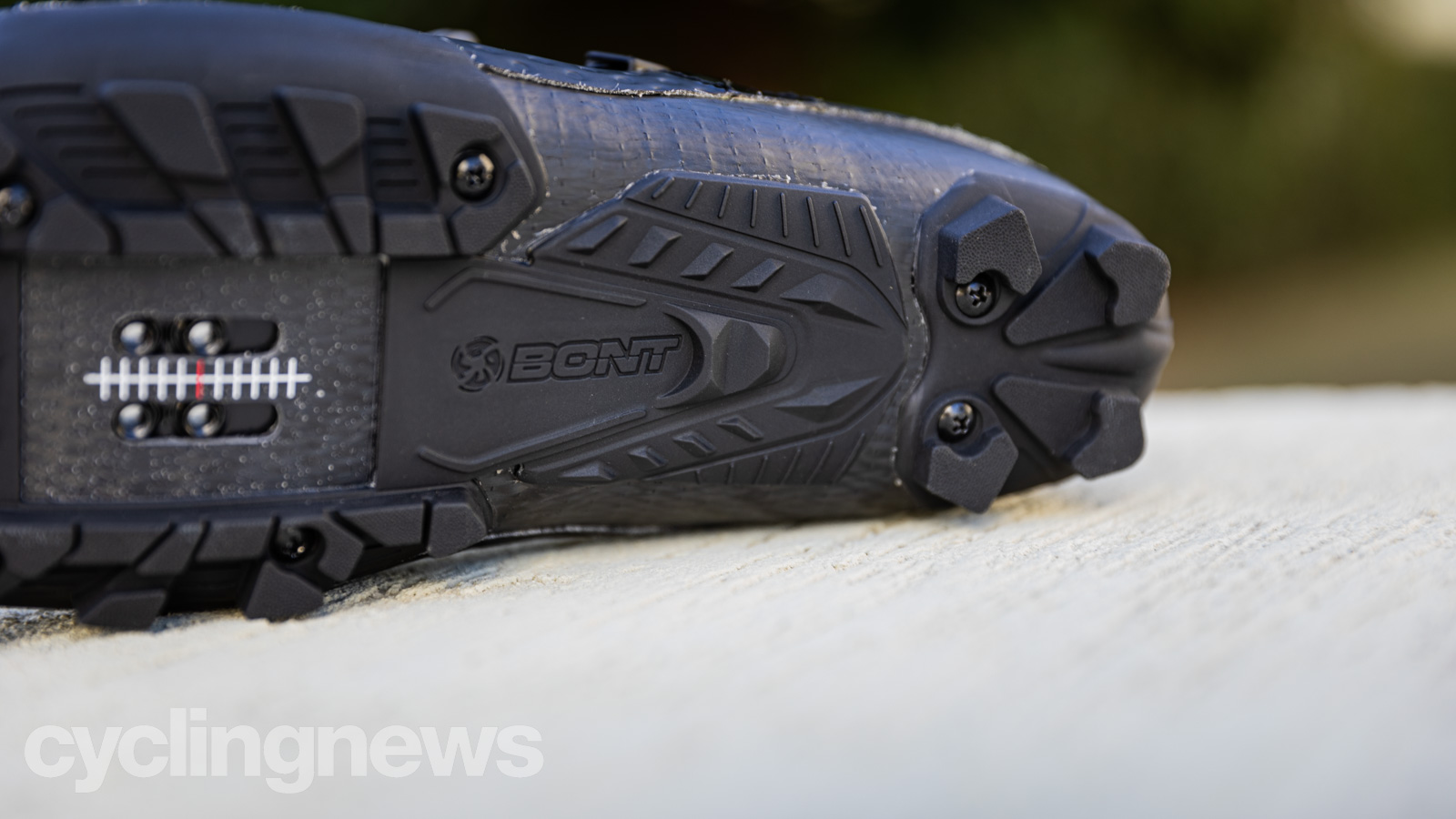
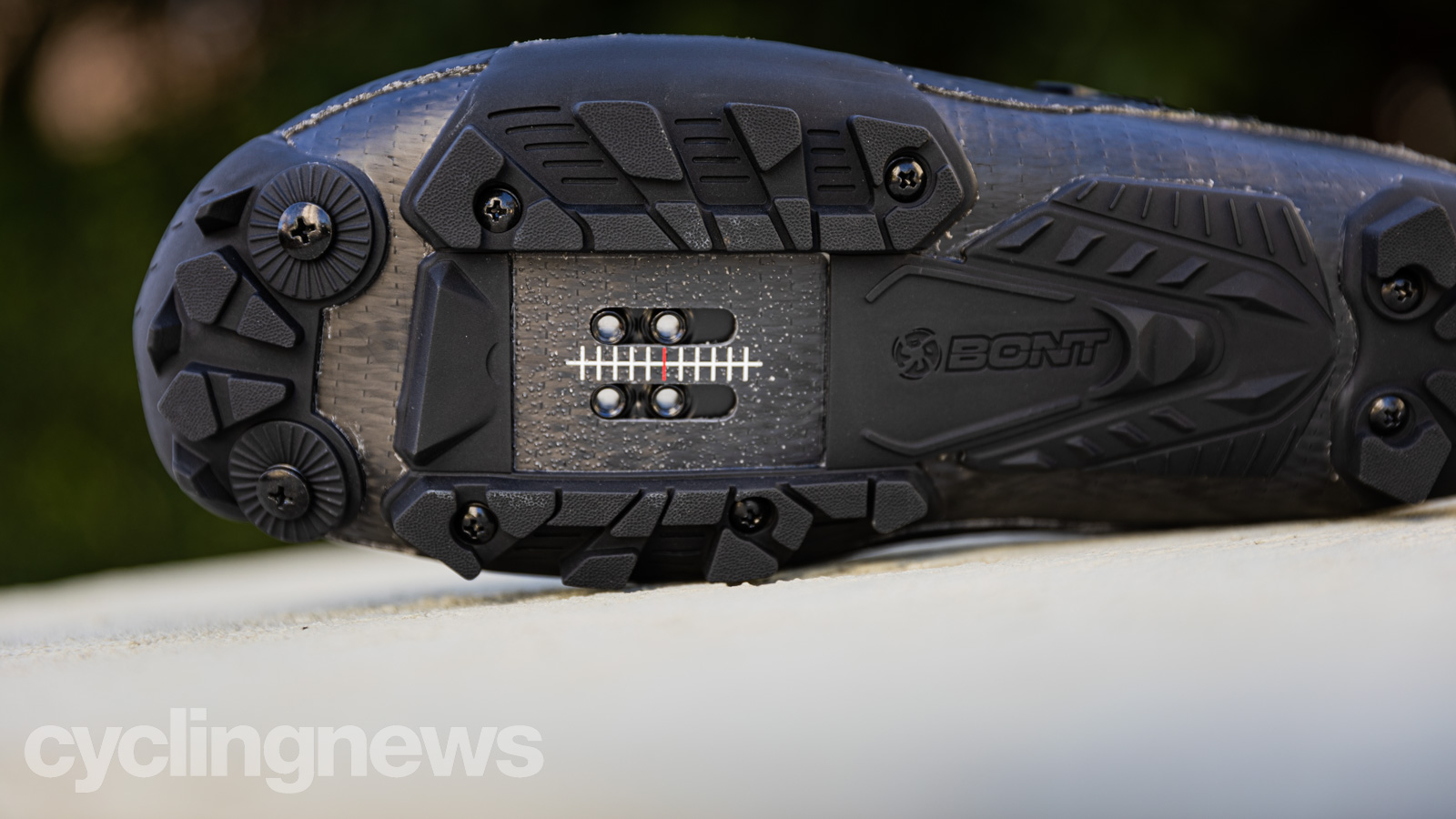
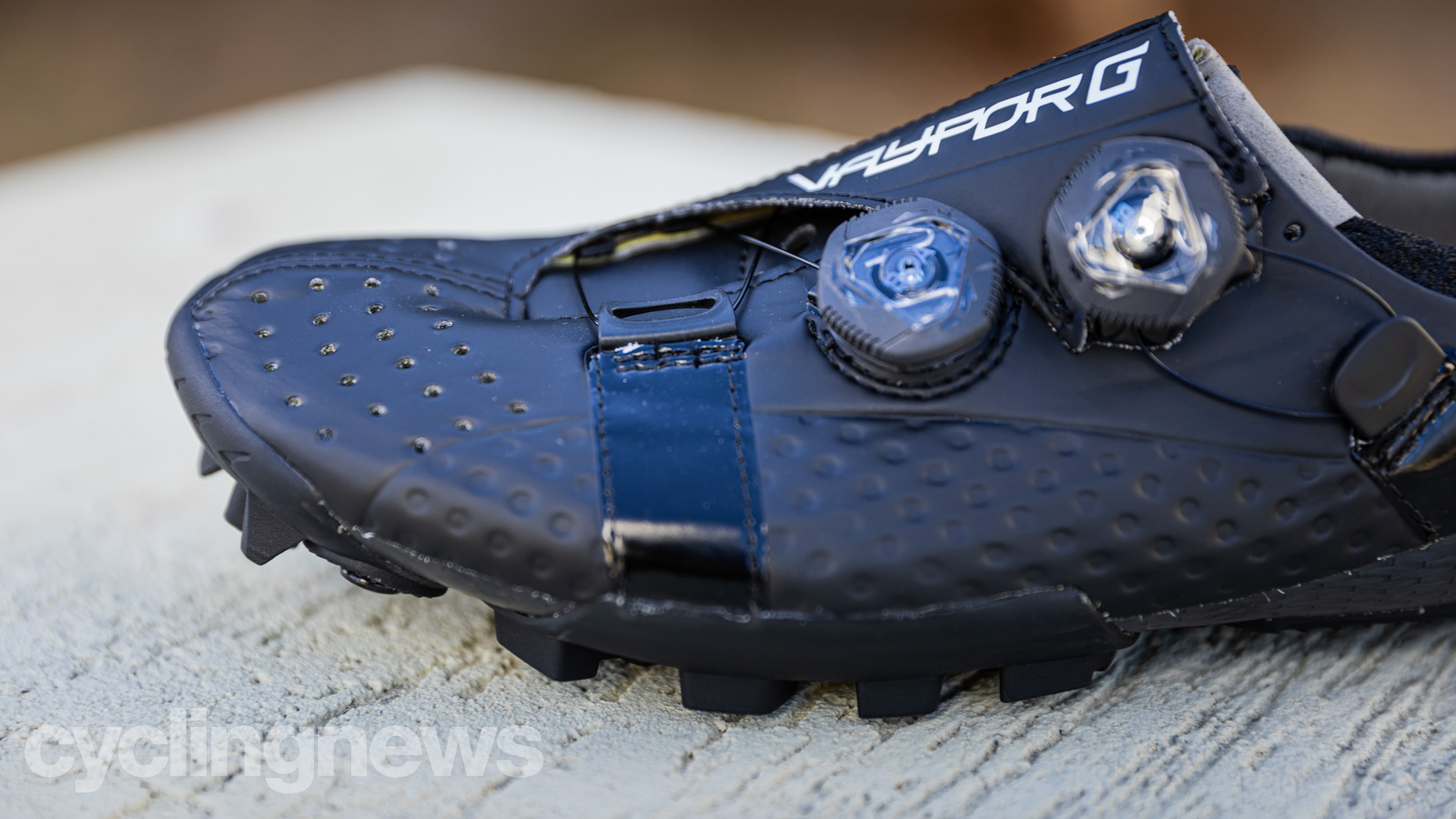
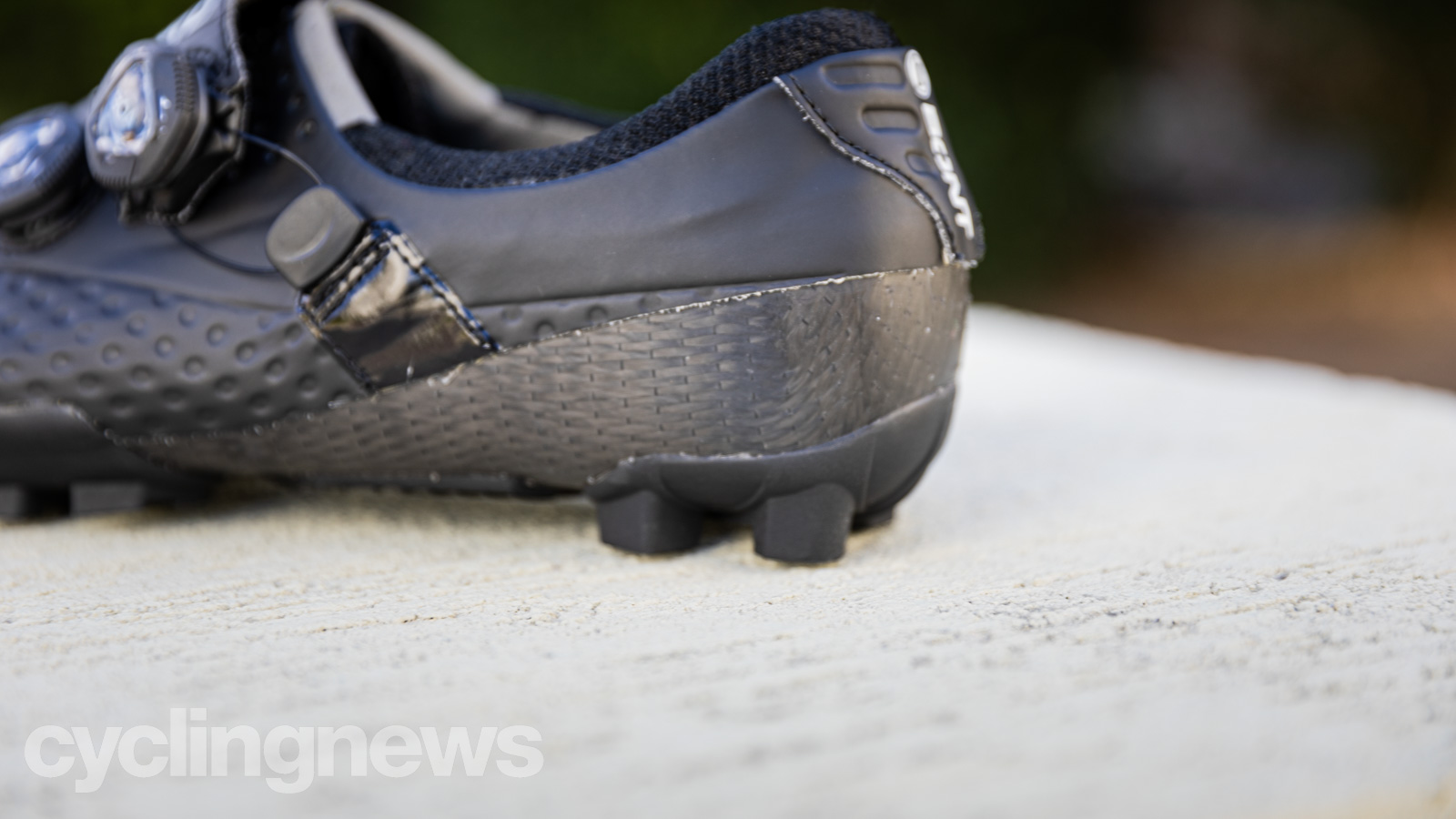
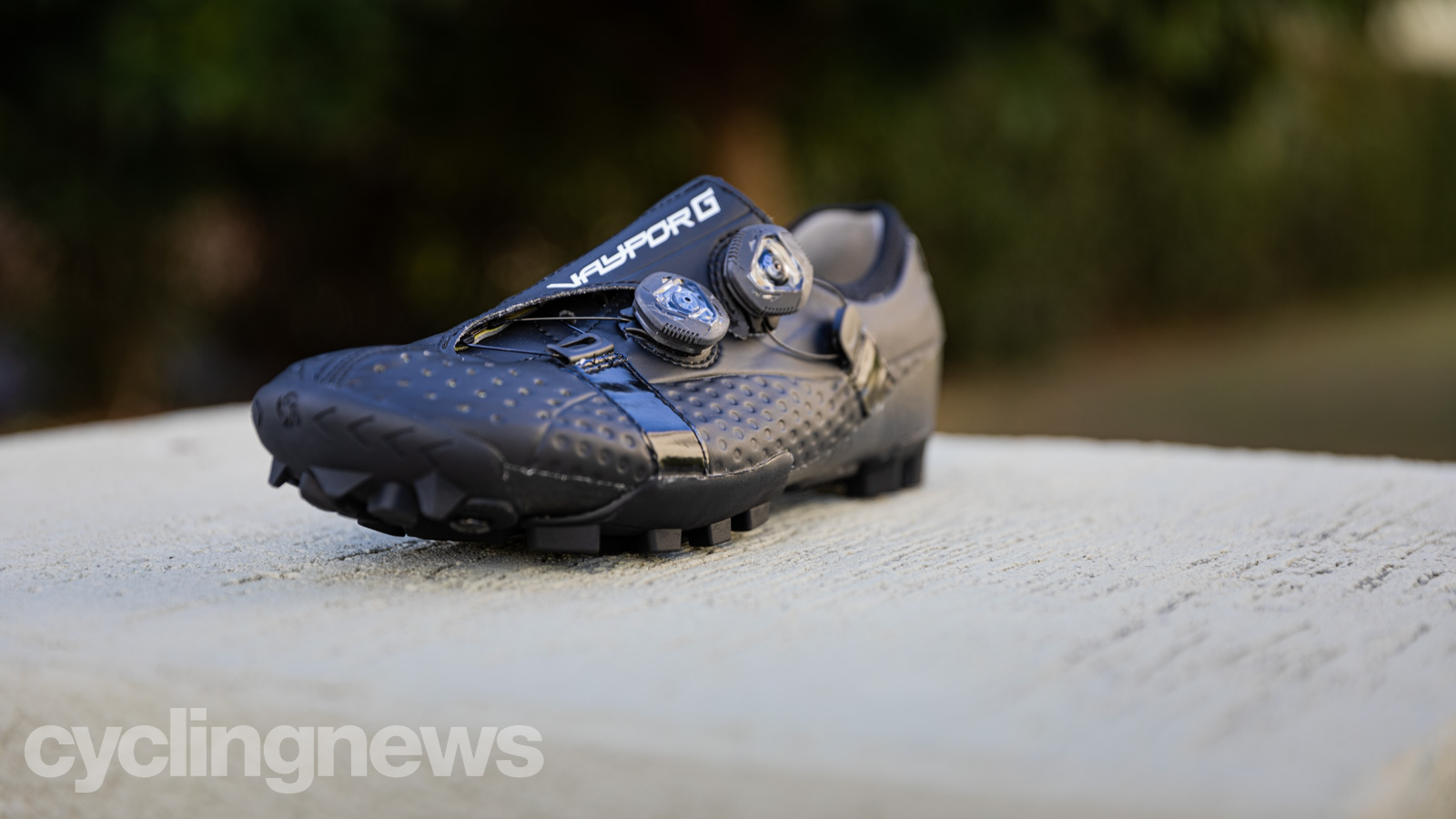
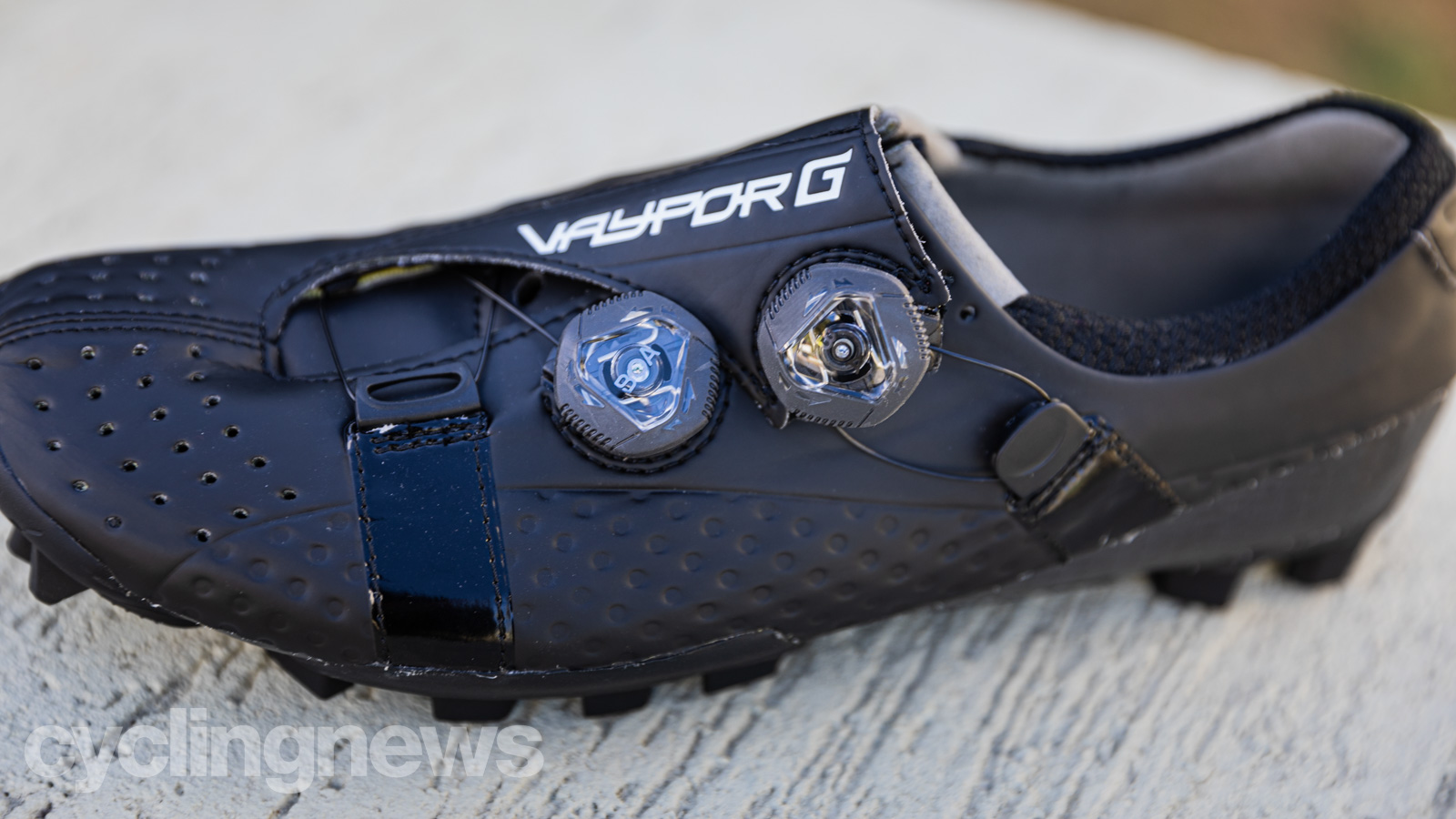
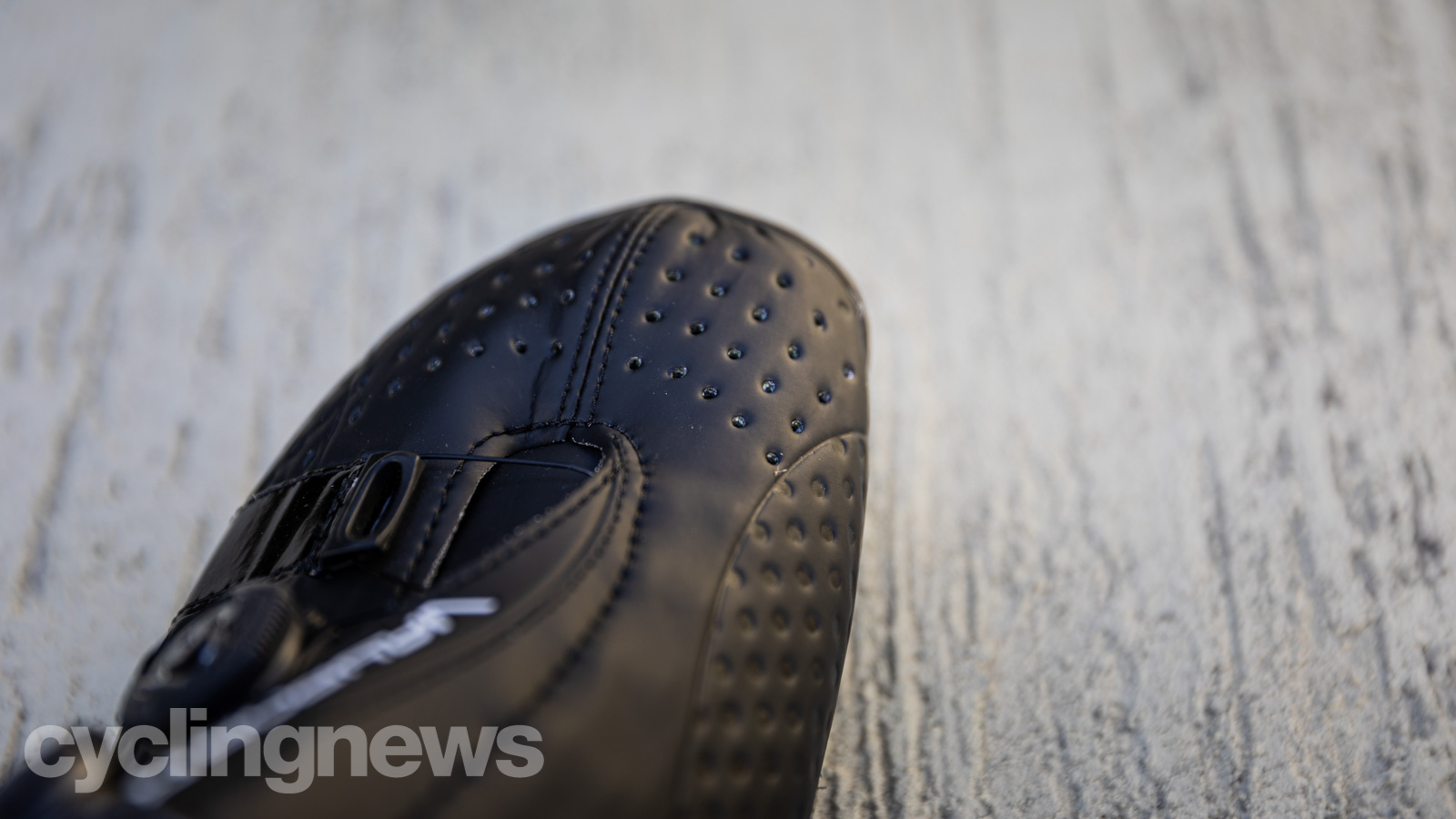
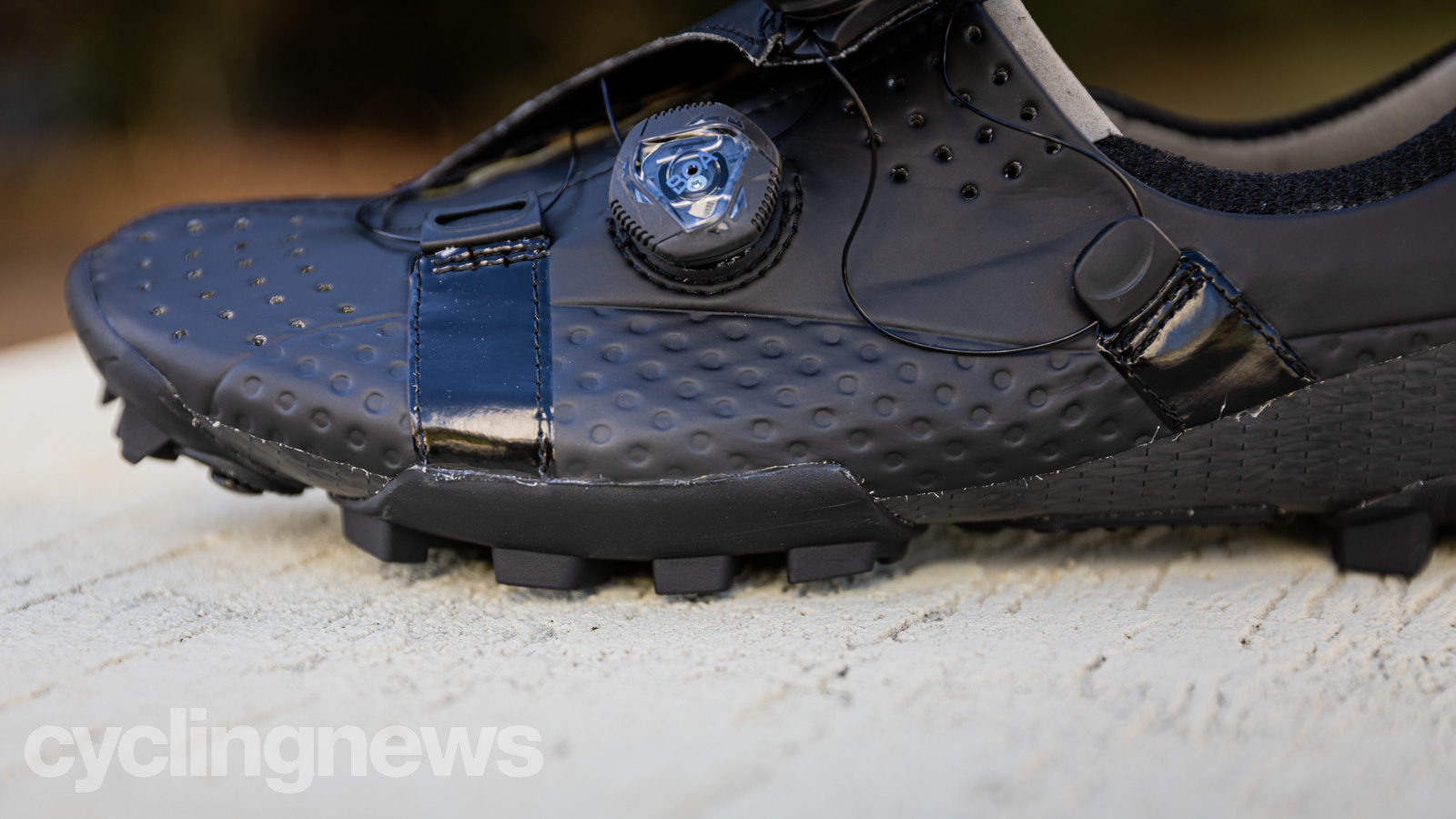
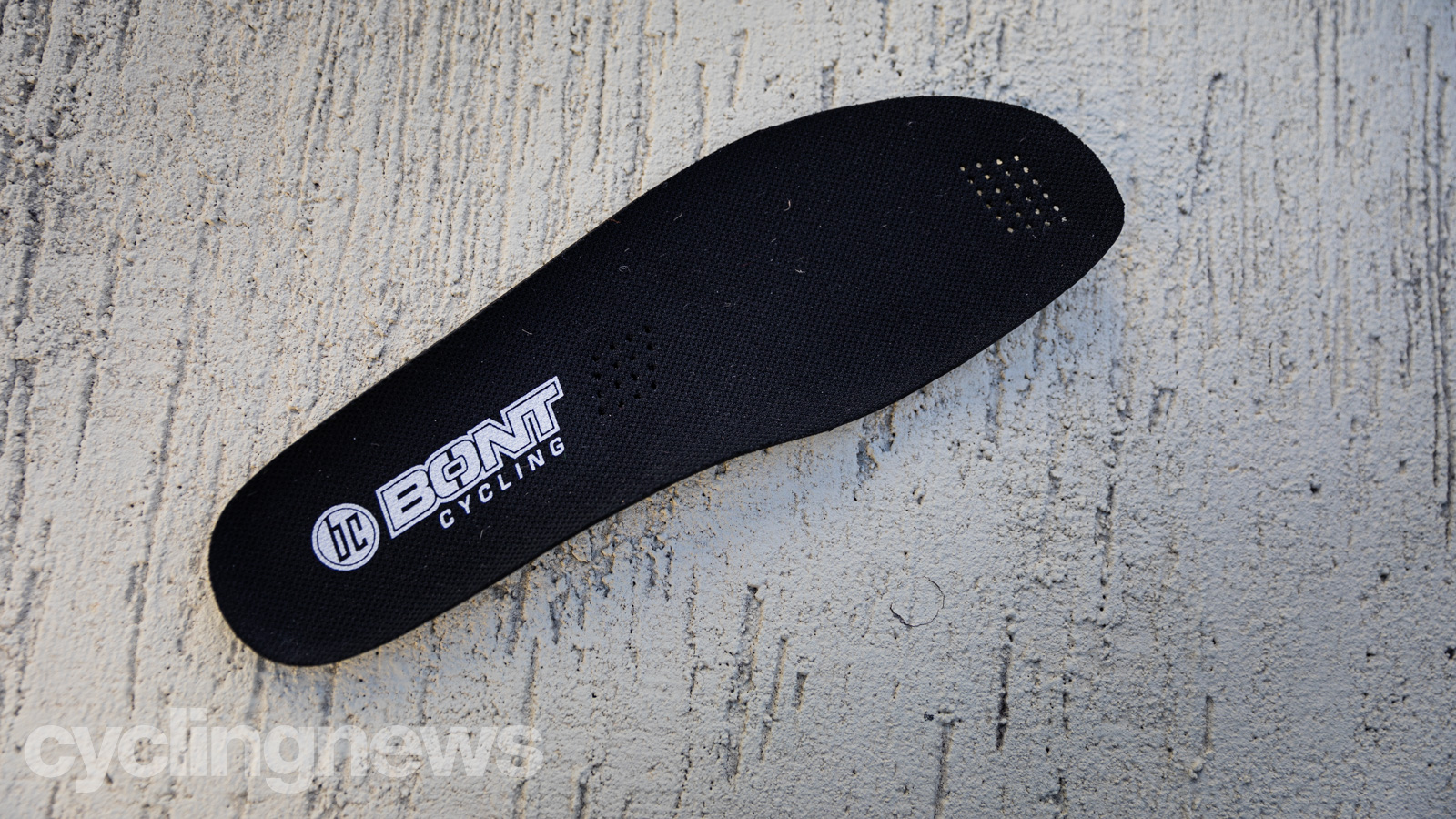
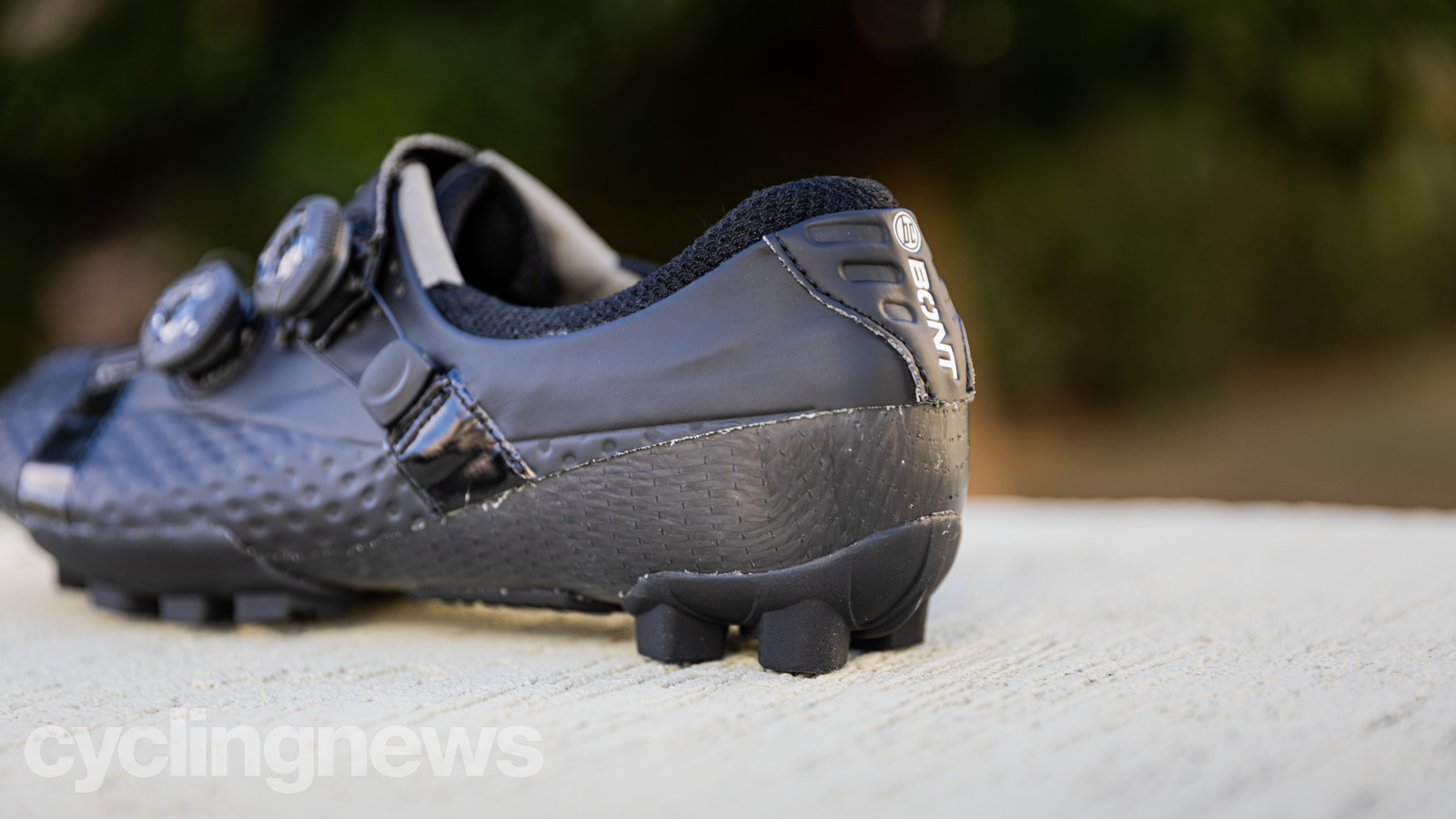
Cyclo-cross bikes: our pick of the best cyclo-cross bikes this year
Best gravel bikes: Fun and fast adventure bikes for your next off-road ride
Best gravel bike wheels: Our pick of the best gravel wheels for racing and adventure riding
Best gravel bike shoes: Cycling shoes for gravel riding
Design and aesthetics
The Vaypor G is, in actuality, the Vaypor S with a two-bolt cleat mount, with replaceable lugs bolted to the sole. With that, they have all the anatomical design features of the Vaypor S.
The toe box is comparatively broad and round because that’s how feet are actually shaped, and the shoes provide room for your feet and toes to spread, as they do when you weight and unweight them as you walk. Bont tells us this allows the pedalling load to be distributed over a wider surface area and provides your toes with some breathing room as your feet swell.
Along the edges of the shoes, the carbon sole is turned up to create a tub, placing your foot inside the sole rather than on top of it. Bont uses the upturned edges to generate support for your feet, meaning you shouldn't need insoles or orthotics. As you move towards the back of the shoe, the carbon sole gradually creeps higher until it forms the entire heel cup, serving not only as built-in arch support and entirely eliminating heel lift and lateral flex — you can quite literally ride around with the Boas open, and your foot will stay planted in the shoe.
There are pages and pages of technical information to explain what each section of Bont’s shoes is designed to support, the crux of it all is to make sure all your joint chains are tracking correctly, to prevent overuse and repetitive motion injuries.
With the carbon structure forming the edges of the shoe, it’s imperative you select the correct width; Bont offers them in narrow, standard, wide, and Asian fit options. If I’m honest, the size charts are pretty intimidating, but Bont has a sizing calculator that runs you through the process of correctly measuring your feet and then helping you pick the correct size. My feet measured up to a 44.5 wide, and in this size, the Bont Vaypor G weighed in at 348.5g per side.
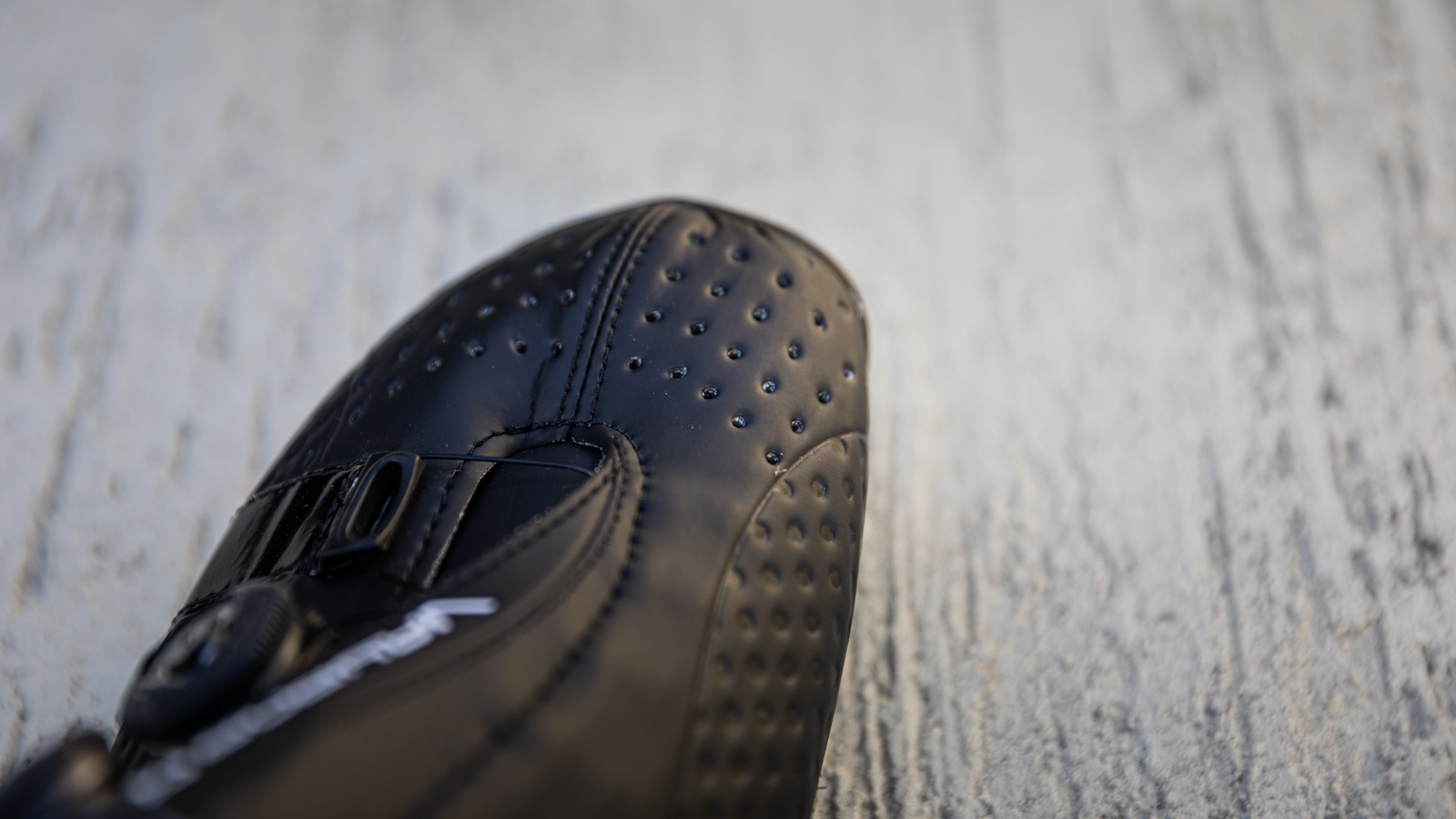
Bont is also one of the few brands that still offers heat-moldable shoes. This technology has in large part, died out in cycling shoes because it was something that required proprietary ovens and finding someone in a bike shop who actually knew how to use them. The genius of Bont’s moulding process is that you can do it in the oven in your kitchen.
Bont has detailed instructions on its website, as well as a video that runs you through the process; I won’t lie, even after having done this process many times over, it still feels weird popping a pair of cycling expensive shoes on a cookie tray and into the oven. The process is pretty straight forward, essentially you preheat your oven to 158F/70C, pop the shoes in for about 20-min until they become soft — make sure you remember to remove the insoles because the heat will miniaturize them.
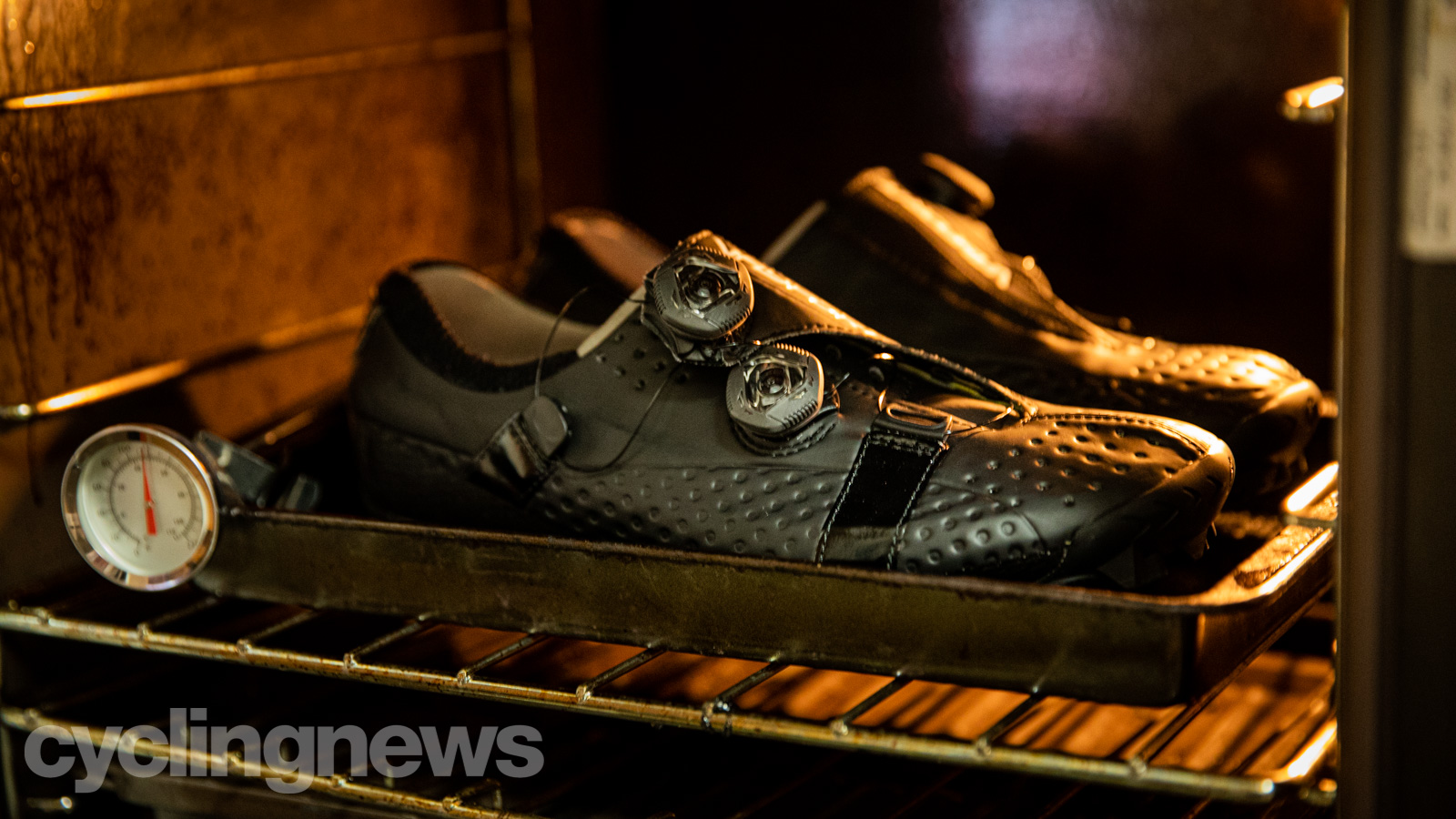
The oven in my current apartment is circa-1985, so I have about as much faith in its thermometer as a mechanic who tightens bolts by feel, so I throw a probe thermometer in along with the shoes just to make sure I don’t overcook them — I also find even at 158F/70C it takes closer to 40min for the shoes to really soften up.
Once they are medium-rare, pop the insoles and your feet into the shoes and tension the boas and stand in them until the shoes cool off. If your feet have any lumps or bumps, the handle of a screwdriver can be used to create the extra room you need; and if you don’t get it right the first time, there is no limit to how many times you can cook a pair of Bont shoes.
Ride experience
As I did with the Vaypor S, before I get to how these shoes ride, I’d like to talk a bit about the moulding experience. Bont says to only mould their shoes if you need to, but my take is if you’re going to spend this much on a pair of cycling shoes, you should take advantage of every feature you’ve paid for.
My feet bear the scars of plug boots from ski racing. These are ski boots intentionally purchased too small, then ground, stretched, punched, and heat moulded to fit your feet millimetre-perfect, to maximize control while screaming down a sheet of ice intentionally designed to trip you up. Because of that, I have a small bone spur on the head of my fifth metatarsal, which likes to make its presence known any time it gets an opportunity.
With gravel riding being a bit more dynamic than road riding, it took me a few tries, and some time on the business end of a screwdriver to please the vocal wannabe sixth toe. Especially when trying to maintain traction around a loose corner, the outside of my foot would jam up against the upturned edge of the sole, and cause some discomfort requiring some extra room. Initially, I was unsure moulding would solve this issue, but after three trips through the oven, I was in foot nirvana.
Inside, the shoes come with a different innersole to the Vaypor S, though it’s still just a basic foam footbed. I found after about 45-min of riding, the ball of my foot would go numb, and I needed to slot in something with a metatarsal bubble — this time some insoles from a pair of Bontrager shoes. When I asked Bont why they provide such a basic footbed, especially given the rest of the Vaypor G’s anatomical focus, the brand says they have something in the works to remedy this issue.
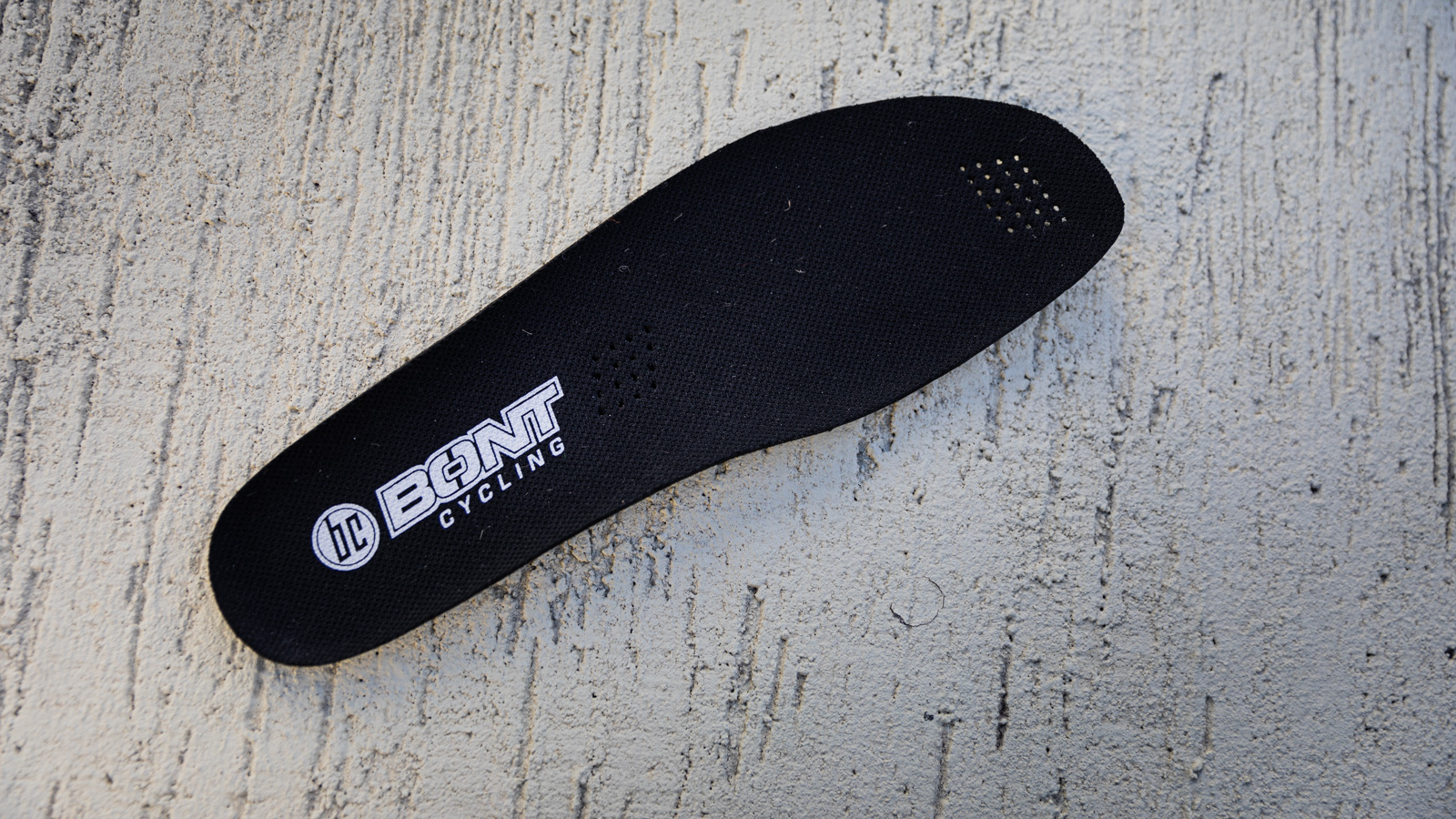
When you do get out and clip into your pedals, the Vaypor G are spectacularly stiff, and the power transfer is impressive, especially given the sole is 3.6mm thick; the stack height is so low I actually had to drop my saddle a touch. These shoes do not flex a millimetre in any direction, and once you have them moulded to your feet, every bit of energy you generate is translated into the cranks.
Stiffness and energy transfer are both buzzwords we use referring to any shoe; however, there is no such thing as a free lunch, and this 2x4 like stiffness does come at a cost, and the Vaypor G isn't particularly comfortable to walk in. It feels a bit like walking around wearing swim flippers, which is no big deal for a short stroll, but you wouldn’t want to embark on an extended hike a bike.
The reference to a board is two-fold, and over extended periods, the Bont shoes feel a bit wooden, and some high-frequency vibration does find its way to your feet. It’s not immediately noticeable, however over time it builds and can become fatiguing, especially on poorly graded gravel.
While walking can feel a little awkward, the lugs provide ample grip when it comes time to scamper over wet roots and rocks, and there are provisions for toe studs to dig in up steep muddy CX obstacles. Bonus points to Bont for adding tread right in the middle of the shoe. This not only helps prevent the carbon plate from becoming chewed up, but also provides taint saving traction during a sketchy remount.
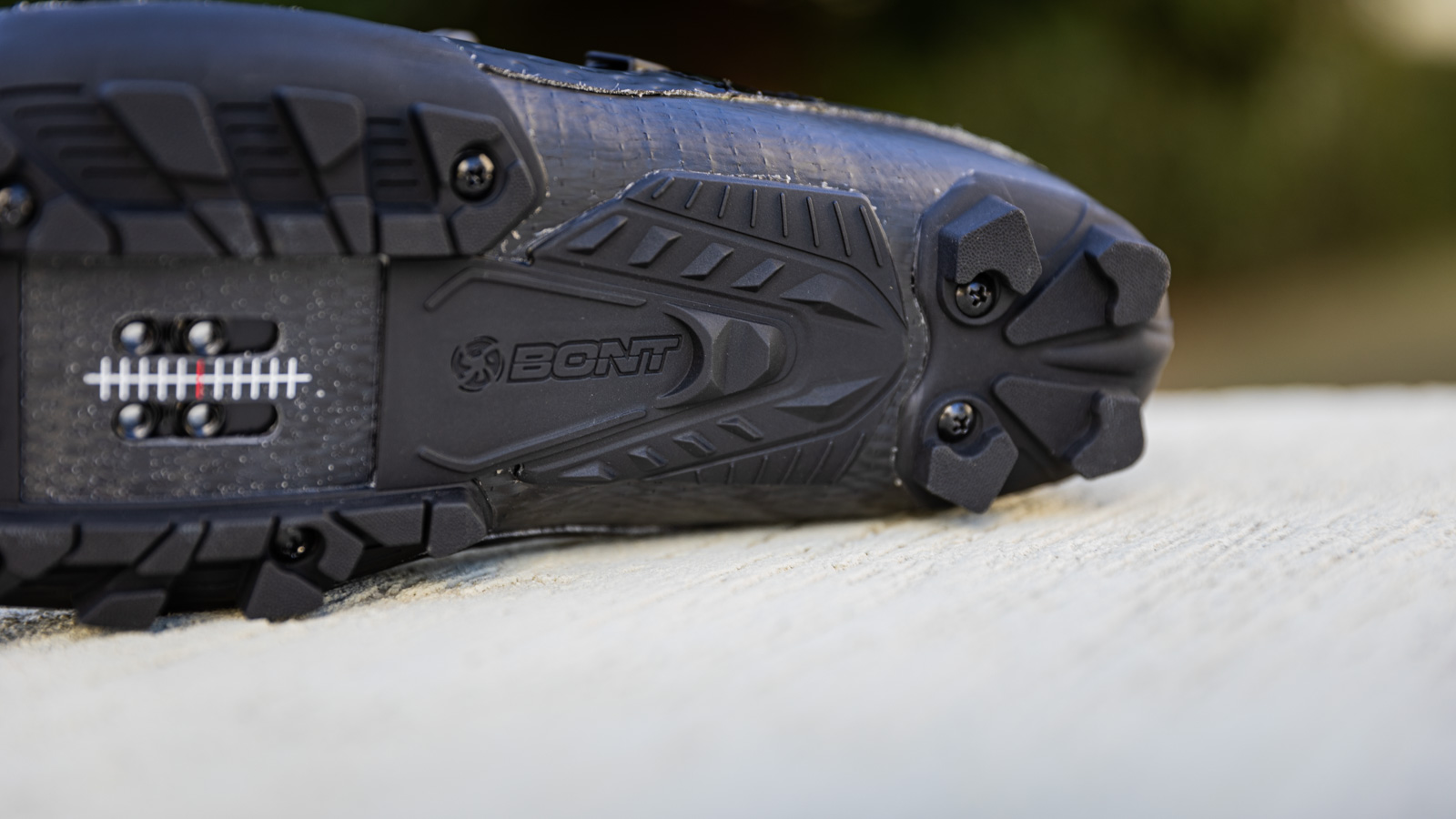
The lugs and front bumper form the armor that protects the edges of the Durolite upper from scrapes and cuts. For strictly gravel riding, it is more than adequate; however, if you’d like them to double as XC MTB shoes, the reinforcements stop right in the spot where rock strikes tend to happen. That said, the Durolite upper has proved to be resilient, these test kicks have come into contact with a few rocks but don’t show any signs of abrasions. The upturned carbon does a pretty good job of insulating your feet from impact too.
With the shoes so stiff not only in the vertical plane, but the side to side stiffness can also be felt, especially when you find yourself in a situation that requires a bit of body-English to keep your tires rubber side down. Other gravel shoes I’ve tested and many high-end XC mountain bike shoes have a degree of lateral flex or twist which creates a level of proprioception as to what the bike is doing underneath you. The unyielding stiffness does come at the cost of this sensation, and on a few occasions, caused me to slip a pedal through sketchy corners.
The dual Boa dials cinch the shoes down evenly across your feet and allow for easy micro-adjustments on the fly. On XC MTB shoes, I’m always a little bit hesitant with BOA’s as I’ve sacrificed dials a few to rocks and trees, but unless your name is Yohan Barelli, you probably won’t be taking your gravel bike into that kind of terrain.
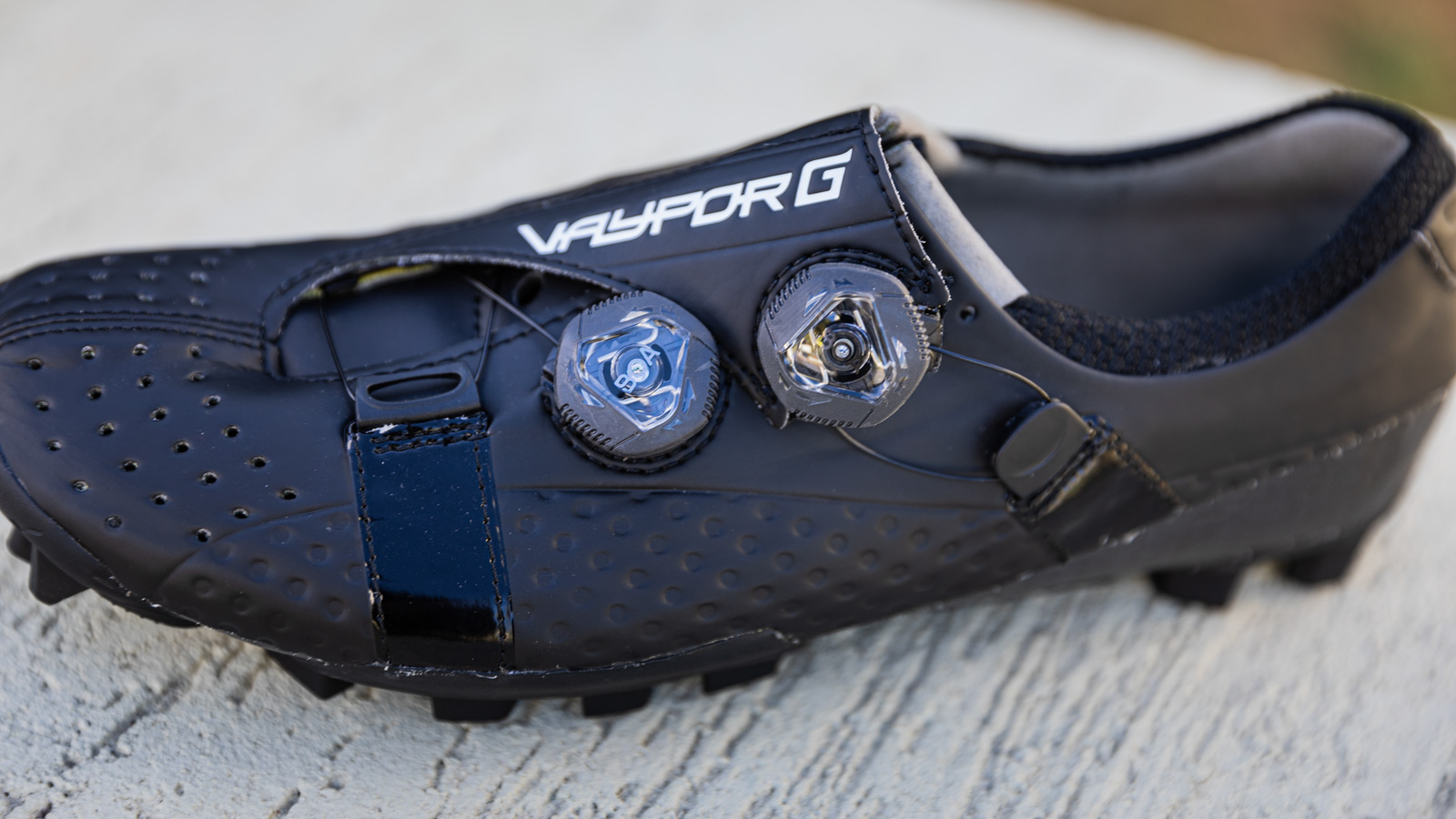
Verdict
The Bont Vaypor G are high-end, high-performance gravel shoes, they are stiff, comfortable, and well thought out, but they are a race shoe through and through. If your gravel riding looks more like mountain biking or involves large sections of walking or carrying your bike, the Vaypor G probably is not the right shoe for you. Same goes for if your typical gravel ride includes frame bags and a bivy.
While the unwavering stiffness translates to top-notch efficiency, the cost of this becomes more apparent as the road gets rougher.
If you’re riding gravel roads that are regularly graded or you’re the type who enjoys ‘I can taste blood in my mouth’ style CX racing, the Vaypor G will impress, not only for its efficiency but also for the comfort on offer. Being able to customize your shoes to fit and support your feet's exact contours is something that most other cycling shoes simply don’t offer — not to mention that the Vaypor G are actually shaped like feet. It takes a little bit of work to get them just right, but the time spent pays off in spades down the line.
Then there is the price. A set of Vaypor G will set you back $399 / £329 / €375 / AU$589, they are anything but cheap, but for riders with off-road drop-bar racing aspirations, they are sure to please.
Tech spec: Bont Vaypor G
- Price: $450 / £325 / AU$550
- Weight without cleats: 348.5g per side, size 44.5, wide (actual)
- Outsole: Carbon fibre
- Stiffness index: N/A
- Retention: Boa IP-1
- Colors: Black, Black/Red
Based on the Gold Coast of Australia, Colin has written tech content for cycling publication for a decade. With hundreds of buyer's guides, reviews and how-tos published in Bike Radar, Cyclingnews, Bike Perfect and Cycling Weekly, as well as in numerous publications dedicated to his other passion, skiing.
Colin was a key contributor to Cyclingnews between 2019 and 2021, during which time he helped build the site's tech coverage from the ground up. Nowadays he works full-time as the news and content editor of Flow MTB magazine.
